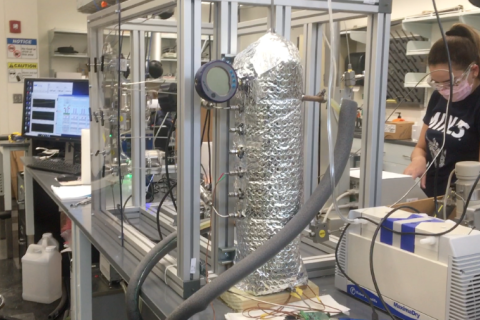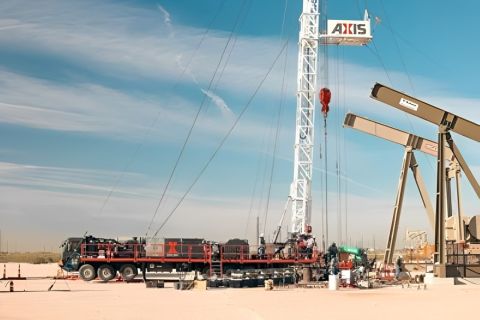Traditionally, states have been the primary regulators of oil and gas activities in the US, including hydraulic fracturing. However, as media attention and public concern have turned fracturing into a political issue, each level of government has sought greater control over its regulation. While the federal government continues to evaluate potential national regulation, another power struggle has taken center stage: Local government restrictions on hydraulic fracturing have led several states to attempt to curtail local involvement in the regulation of oil and gas operations.
States have generally resisted local regulation of hydraulic fracturing when such regulations are inconsistent with the state’s broader philosophies regarding the regulation of oil and gas activities. States generally seek to provide uniform regulation to create stable, predictable environments for industry to operate. However, the political landscape and public opinion in some localities may differ from the political landscape and public opinion at the state level. As a result, some local governments have sought to impose their own restrictions on fracturing and other oil and gas activities. This has created tension between states and some local governments, which has led to legal battles between local governments and states, landowners, and E&P companies.
Preemption
A municipality’s authority is derived from the state in which it is located. The majority of oil- and gas-producing states have constitutional provisions allowing local ordinances regarding issues of local concern. This home-rule authority generally cannot be overruled by statute. However, when a municipal ordinance intrudes into an area already regulated by the state the ordinance may be preempted and therefore becomes invalid. State laws can preempt local control of an activity in three ways: express preemption, conflict preemption, or field preemption. Express preemption occurs when a state law explicitly prohibits local ordinances from addressing an area. An ordinance may be subject to conflict preemption if it conflicts with a specific part of state law. Finally, field preemption exists where state law is so comprehensive in an area that it “occupies the field.”
Challenges to local regulation
Some local governments have passed complete bans or moratoria on fracturing. Others have sought to regulate where it may occur or how it may be conducted. In response to this proliferation of local restrictions, several states have passed laws to preempt these initiatives.
Bans and moratoria. More than 100 local authorities have imposed permanent bans or temporary moratoria on hydraulic fracturing and other oil and gas activities. Several states have found such bans to be preempted, but others have taken a narrower view of preemption and have upheld the local ordinances.
In 2011 Morgantown, W.Va., passed an ordinance prohibiting “drilling a well for the purpose of extracting or storing oil or gas using horizontal drilling with fracturing methods.” A landowner and an oil and gas company challenged the ordinance in Northeast Natural Energy LLC v. Morgantown, claiming it violated their constitutional rights and was preempted. The court agreed, finding that state law so occupied the field that there was no room for local regulation.
Similarly, Colorado’s Supreme Court struck down a municipal ban on all oil and gas drilling in Voss v. Lundvall Bros. Inc. holding that “the statewide interest in the efficient development and production of oil and gas resources … as well as in protecting the correlative rights of owners and producers … prevents a home-rule city from exercising its land-use authority so as to totally ban the drilling of oil, gas, or hydrocarbon wells within the city.” Nevertheless, in November 2013, several towns in Colorado passed bans or moratoria on fracturing. These bans are currently being challenged in Colorado courts.
New York courts also have addressed local bans on fracturing, with mixed results. Although New York currently has a statewide moratorium on new permits for hydraulic fracturing, several municipalities have adopted ordinances banning or limiting it in anticipation of the statewide moratorium being lifted. In October 2012 the court in Jeffrey v. Ryan determined that an ordinance prohibiting oil and gas development for two years was a de facto moratorium and that the criteria for a moratorium had not been met. Thus, the court ruled that the ordinance was invalid. A New York appellate court, however, recently reached the opposite conclusion. Though New York’s Environmental Conservation Law provides that state law “shall supersede all local laws or ordinances relating to the regulation of the oil, gas, and solution mining industries,” in Norse Energy Corp. US v. Town of Dryden and Cooperstown Holstein Corp. v. Town of Middlefield, the court upheld decisions that municipal bans in Dryden and Middlefield were valid exercises of home-rule authority. The court reasoned that the municipal bans did not “regulate” oil and gas operations but instead “simply establishe[d] permissible and prohibited uses of land … for the purpose of regulating land generally.” These opinions are on appeal to the state’s highest court, with decisions expected in 2014.
Regulation of ‘where’ fracturing occurs. Rather than ban fracturing, some municipalities have restricted where oil and gas operations may take place. Such restrictions either use zoning to prohibit operations in certain areas or specify setback requirements that require wells to be drilled a certain distance from particular locations.
Restrictions on siting have generally been upheld when challenged, particularly where the regulations use zoning restrictions rather than imposing setback requirements. For example, the Pennsylvania Supreme Court ruled in Huntley & Huntley Inc. v. Borough Council of Oakmont and Range Resources-Appalachia LLC v. Salem Township that a broad express preemption clause in the Pennsylvania Oil and Gas Act prohibited ordinances that “imposed conditions, requirements, or limitations on the same features of oil and gas activities regulated by the act” but still allowed local ordinances that “sought only to control the location of wells consistent with established zoning principles.”
Thereafter, the Pennsylvania Legislature passed Act 13 to restrict municipal authority to regulate oil and gas activities. But Pennsylvania’s Supreme Court recently struck down the core provisions of that law, including its implementation of statewide zoning standards for oil and gas operations, in Robinson Township v. Commonwealth of Pennsylvania. The court relied on the Pennsylvania Constitution’s Environmental Rights Amendment, which guarantees the “right to clean air, pure water, and the preservation of the natural, scenic, historic, and aesthetic values of the environment.”
Similarly, in Ohio local ordinances prohibiting oil and gas development in certain zoning districts have historically been upheld. The Ohio General Assembly recently amended its Oil and Gas Act to give state regulators “sole and exclusive authority to regulate the permitting, location, and spacing of oil and gas wells and production operations within the state.” However, early signs indicate that Ohio courts may continue to look to whether there are actual conflicts between a municipal ordinance and state law despite the statute’s new preemption language.
Regulation of ‘how’ fracturing occurs. Some municipalities have sought to regulate how fracturing occurs by imposing limits on noise levels, odors, emissions, visual impacts, and water use and disposal. These regulations have been more often overturned than limits on siting as they tend to be more likely to invade the province of state authority. For example, in Town of Frederick v. North American Resources Co., a Colorado court held that an ordinance that regulated noise, visual impacts, and setbacks more stringently than the state was preempted. Similarly, Pennsylvania and New York courts have held that a municipality may regulate where fracturing occurs but not how it occurs.
Tensions continue
The tension between state and local governments over fracturing regulation continues in a number of states. Even as state legislatures work to promote statewide consistency, state courts will continue to be asked to resolve this tension and regulatory uncertainty at the local level and may continue to confront individual projects.
Recommended Reading
Defeating the ‘Four Horsemen’ of Flow Assurance
2024-04-18 - Service companies combine processes and techniques to mitigate the impact of paraffin, asphaltenes, hydrates and scale on production—and keep the cash flowing.
Going with the Flow: Universities, Operators Team on Flow Assurance Research
2024-03-05 - From Icy Waterfloods to Gas Lift Slugs, operators and researchers at Texas Tech University and the Colorado School of Mines are finding ways to optimize flow assurance, reduce costs and improve wells.
AI Poised to Break Out of its Oilfield Niche
2024-04-11 - At the AI in Oil & Gas Conference in Houston, experts talked up the benefits artificial intelligence can provide to the downstream, midstream and upstream sectors, while assuring the audience humans will still run the show.
Axis Energy Deploys Fully Electric Well Service Rig
2024-03-13 - Axis Energy Services’ EPIC RIG has the ability to run on grid power for reduced emissions and increased fuel flexibility.
Tech Trends: QYSEA’s Artificially Intelligent Underwater Additions
2024-02-13 - Using their AI underwater image filtering algorithm, the QYSEA AI Diver Tracking allows the FIFISH ROV to identify a diver's movements and conducts real-time automatic analysis.





